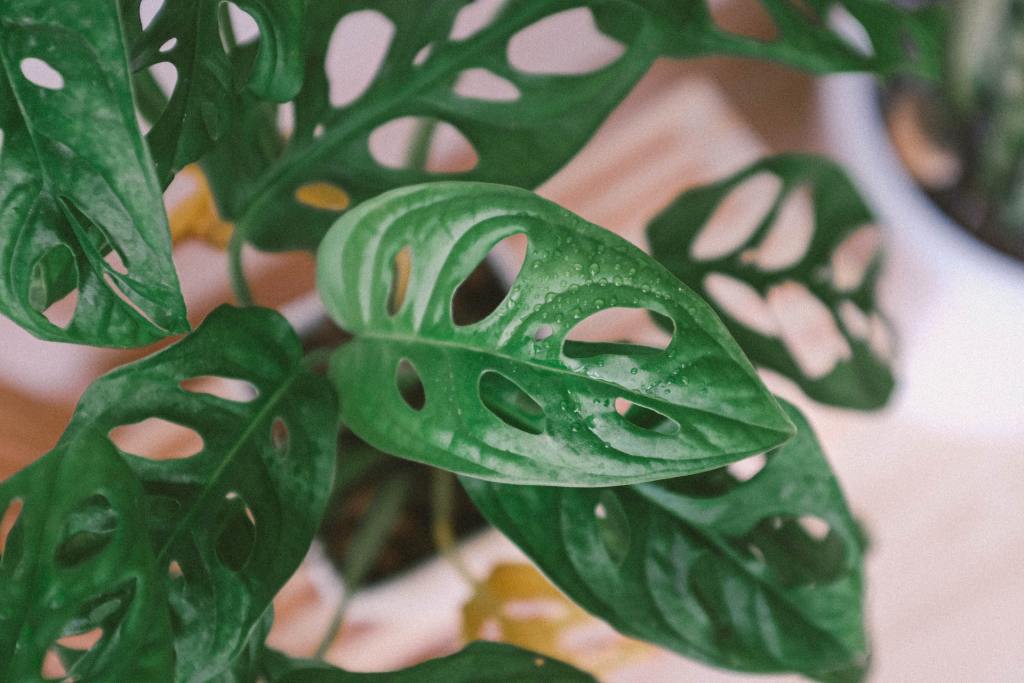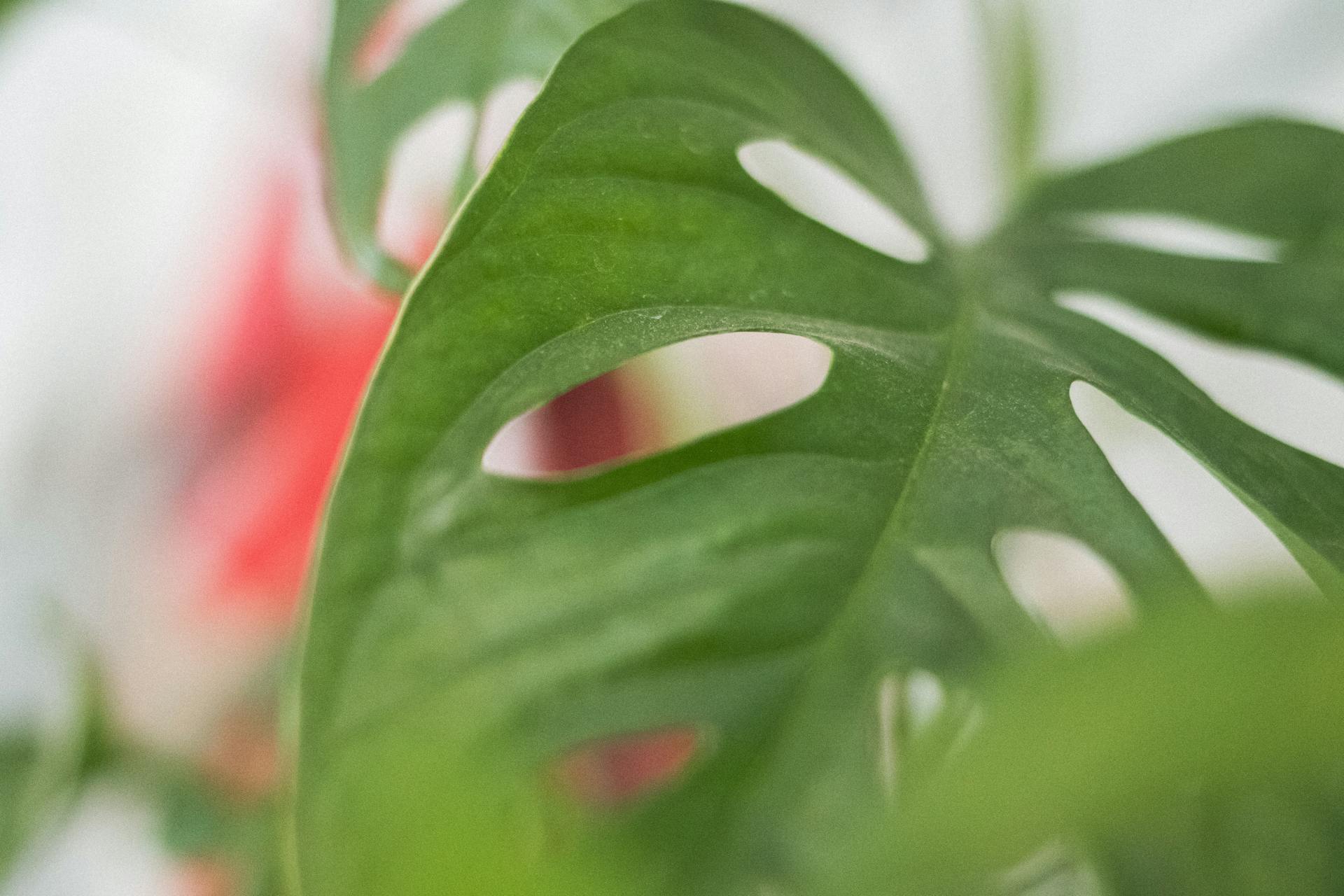
There is a time in every plant lover’s journey where they want to take the leap and invest in a plant that might not be beginner level but isn’t going to break the bank if it dies on their first attempt. The monstera adansonii — also known as the Swiss cheese plant — is an ideal plant to test your growing abilities without putting too much money on the line. While they’re often more expensive than pothos or ZZ plants, they are affordable plants with an exotic look. Let’s dive into how to care for these lovely plants, so you don’t end up with a crispy mess.

What is the Swiss cheese plant?
The monstera adansonii is native to tropical forests and is also commonly known as the Swiss cheese plant. This is because of its holey leaves that look like Swiss cheese. Its cousin, the monstera deliciosa plant, often gets the limelight in Instagram posts. However, we think it’s time the adansonii had its time to shine. It’s a much smaller and more delicate plant than the deliciosa and can fit in smaller spaces. It can grow up to 5 feet tall as a houseplant but can reach 13 feet or higher in its natural environment.

Care tips for the Swiss cheese plant
If you’ve picked up one of these beautiful plants, you might be wondering how to care for it. Here are some of our tips and tricks for monster adansonii care.
Water
Watering an adansonii plant can sometimes be tricky. This plant likes to live in soil that is moist but not soggy. Keeping this balance can be challenging and is the number one reason growers kill their plants. To ensure this doesn’t happen to you, invest in a water meter and check the soil’s moisture levels once a week. When the soil begins to lean more towards the dry end of the moist meter, it’s time to water. Give it a good soak until the water runs out of the drainage hole, and be sure it drains thoroughly before putting it back on its tray.
Since you’re trying to keep the soil moist, root rot will probably be your biggest concern. Ensuring that your plant drains thoroughly and isn’t sitting in water will reduce that risk considerably.
Light
Monstera is part of a plant family called aroids. These plants live in the forest’s understory and get the filtered or dappled sunlight that streams through the more enormous trees. The Swiss cheese plant will want bright but indirect light. Too much light and the soil will dry too quickly, and the leaves could burn.
Food
This fast grower will need plenty of food to maintain its leaves, so be sure to provide it with a balanced fertilizer throughout the growing season. You could also use a slow-release fertilizer to ensure the plant is getting a constant supply of food. If you’re noticing yellowing leaves on your monstera adansonii, you’re probably due for a feeding.
Humidity

The humidity needs of the Swiss cheese plant are higher than your average houseplant. Ideally, this plant wants almost 90 percent humidity, but that’s not exactly healthy for your home’s paint job or any books and furniture you might have. We suggest trying to keep it somewhere between 65% and 70% humidity in the area where you’ll be growing your adansonii.
Some growers will group high-humidity plants in a corner with a humidifier. This creates a mini-ecosystem where the plants can share and thrive in the high humidity together. Grouping them like this helps keep the humidity in the area and reduces the risk of your home’s furnishings being ruined by moisture.
Temperature
To encourage your monstera adansonii to grow as best it can; it’s necessary to keep the temperatures around 70 or 75 degrees. Anything lower than this, and the plant’s growth will come to a standstill. If you reach temperatures as low as 65, you’ll risk the plant wilting and dying from the cold. So avoid drafts and consider putting this plant in the warmest room of your home, and keep a careful eye on your thermostat over the winter.
Toxicity
Although they’re cute, the Swiss cheese plant is toxic to the animals in your home. If the leaves are ingested, they can irritate the mouth and stomach, causing mouth swelling, excessive drooling, vomiting, and difficulty swallowing. So be sure this plant is in a safe location and out of reach of pets and kids.
Training your Swiss cheese plant
Like its monstera deliciosa cousin, the adansonii can be grown as a vining plant or trained to grow up a moss pole. This makes it a diverse and easy-to-style plant. It will look beautiful in a hanging planter while its delicate leaves drape down the wall, or even in a pot on the floor with its vines spinning around a lovely moss pole. Either way, this plant is a statement piece that you’ll want to show off to all your house guests.

Common Swiss cheese plant issues
Here are some common Swiss cheese plant issues, plus tips on how you can troubleshoot problems with your plant.
- Yellow leaves: Yellow leaves can have many causes, including pest infestations, underwatering, overwatering, and lack of root space. Check your leaves for pests, consider your watering schedule, and pull your roots up to see if they are rotting or too crowded.
- Brown leaves: Brown leaves may indicate issues such as underwatering, overexposure to light, or low humidity. Assess your watering, lighting, and humidity situation and adjust care as needed.
- Black leaves: Black leaves are often a sign of root rot, which is caused by overwatering. Cut back on watering and repot your plant into fresh soil if necessary.
- Leggy vines: If your vines look leggy and don’t have much leaf growth, your plant may be reaching for light. Bring your plant closer to the window or consider installing grow lights.
Although we love the monstera deliciosa, we hope you consider trying out its smaller cousin, the monstera adansonii. The stunning green delicate leaves will bring a lovely look to your home. Be sure to keep its soil moist, and train its vines to grow where you want them to — or else you might end up with a Jumanji situation on your hands!


